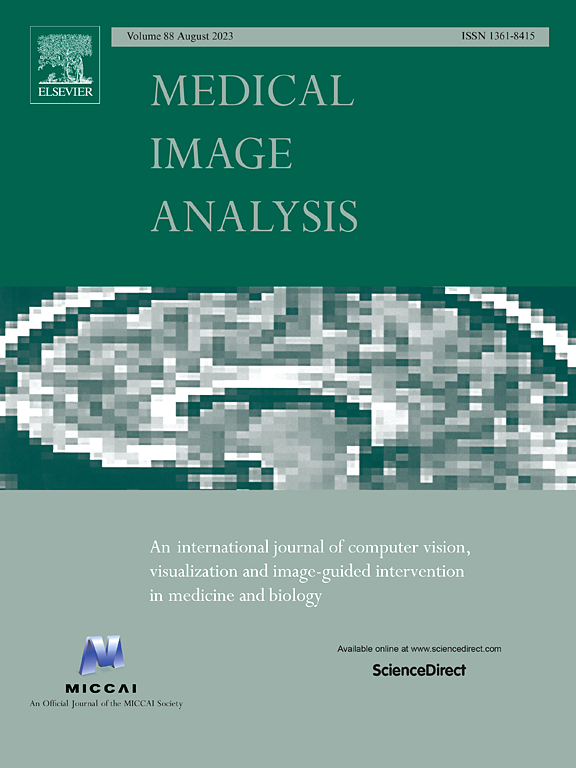Graph-based prototype inverse-projection for identifying cortical sulcal pattern abnormalities in congenital heart disease
IF 10.7
1区 医学
Q1 COMPUTER SCIENCE, ARTIFICIAL INTELLIGENCE
引用次数: 0
Abstract
Examining the altered arrangement and patterning of sulcal folds offers insights into the mechanisms of neurodevelopmental differences in psychiatric and neurological disorders. Previous sulcal pattern analysis used spectral graph matching of sulcal pit-based graph structures to assess deviations from normative sulcal patterns. However, challenges exist, including the absence of a standard criterion for defining a typical reference set, time-consuming cost of graph matching, user-defined feature weight sets, and assumptions about uniform node distribution. We developed a deep learning-based sulcal pattern analysis to address these challenges by adapting prototype-based graph neural networks to sulcal pattern graphs. Additionally, we proposed a prototype inverse-projection for better interpretability. Unlike other prototype-based models, our approach inversely projects prototypes onto individual node representations to calculate the inverse-projection weights, enabling efficient visualization of prototypes and focusing the model on selective regions. We evaluated our method through a classification task between healthy controls (n = 174, age = 15.4 1.9 [mean ± standard deviation, years]) and patients with congenital heart disease (n = 345, age = 15.8 4.7) from four cohort studies and a public dataset. Our approach demonstrated superior classification performance compared to other state-of-the-art models, supported by extensive ablative studies. Furthermore, we visualized and examined the learned prototypes to enhance understanding. We believe our method has the potential to be a sensitive and understandable tool for sulcal pattern analysis.

求助全文
约1分钟内获得全文
求助全文
来源期刊

Medical image analysis
工程技术-工程:生物医学
CiteScore
22.10
自引率
6.40%
发文量
309
审稿时长
6.6 months
期刊介绍:
Medical Image Analysis serves as a platform for sharing new research findings in the realm of medical and biological image analysis, with a focus on applications of computer vision, virtual reality, and robotics to biomedical imaging challenges. The journal prioritizes the publication of high-quality, original papers contributing to the fundamental science of processing, analyzing, and utilizing medical and biological images. It welcomes approaches utilizing biomedical image datasets across all spatial scales, from molecular/cellular imaging to tissue/organ imaging.
 求助内容:
求助内容: 应助结果提醒方式:
应助结果提醒方式:


